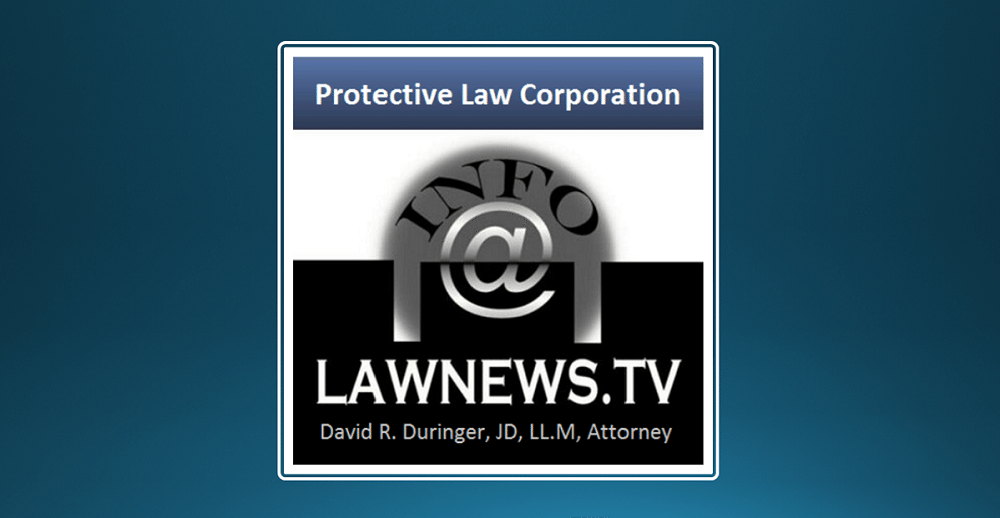Fact Sheet
Department of Labor Finalizes Rule to Address Conflicts of Interest in Retirement Advice, Saving Middle-Class Families Billions of Dollars Every Year
U.S. Department of Labor
Employee Benefits Security Administration
I. Summary
Since 1974, when Congress enacted the Employee Retirement Income Security Act (ERISA), the Department of Labor (‘DOL’ or ‘Department’) has worked to protect America’s tax-preferred retirement savings. In the ensuing decades, there has been a dramatic shift in the retirement savings marketplace from employer-sponsored defined benefit plans to participant-directed 401(k) plans, coupled with the widespread growth in assets in Individual Retirement Accounts and Annuities (IRAs). When the basic rules governing retirement investment advice were created in 1975, 401(k) plans did not exist and IRAs had just been authorized. These rules have not been meaningfully changed since 1975.
The changes in the retirement landscape over the last 40 years have increased the importance of sound investment advice for workers and their families. While many advisers do act in their customers’ best interest, not everyone is legally obligated to do so. Many investment professionals, consultants, brokers, insurance agents and other advisers operate within compensation structures that are misaligned with their customers’ interests and often create strong incentives to steer customers into particular investment products. These conflicts of interest do not always have to be disclosed and advisers have limited liability under federal pension law for any harms resulting from the advice they provide to plan sponsors and retirement investors. These harms include the loss of billions of dollars a year for retirement investors in the form of eroded plan and IRA investment results, often after rollovers out of ERISA-protected plans and into IRAs.
The Department’s conflict of interest final rule and related exemptions will protect investors by requiring all who provide retirement investment advice to plans and IRAs to abide by a “fiduciary” standard—putting their clients’ best interest before their own profits. This final rulemaking fulfills the Department’s mission to protect, educate, and empower retirement investors as they face important choices in saving for retirement in their IRAs and employee benefit plans.
II. Background
Beginning in 2009, the Department of Labor undertook a multi-year regulatory project to address the problems with conflicts of interest in investment advice, balancing the need to better protect retirement savings while minimizing disruptions to the many good practices and good advice that the industry provides today.
From the outset, the project involved significant input from interested stakeholders, including two separate proposals published for public comment in 2010 and 2015. The Department held multi-day public hearings on the 2010 and 2015 proposals, hundreds of individual meetings with a wide range of stakeholders, and published the public comments and hearing transcripts on the DOL website. Thousands of comments and petitions came from consumer groups, plan sponsors, financial services companies, academics, elected government officials, trade and industry associations, and others, both in support of and in opposition to the proposals.
After careful consideration of the issues raised by the written comments, hearing testimony, and the extensive public record, the Department is adopting a final rule and related final exemptions. The final rule defines who is a fiduciary investment adviser, while accompanying prohibited transaction class exemptions allow certain broker-dealers, insurance agents and others that act as investment advice fiduciaries to continue to receive a variety of common forms of compensation as long as they are willing to adhere to standards aimed at ensuring that their advice is impartial and in the best interest of their customers. The rulemaking package also includes a regulatory impact analysis which demonstrates the monetary harm caused to retirement investors from conflicted advice and the gains that will result from the rule.
Going forward, those that provide investment advice to plans, plan sponsors, fiduciaries, plan participants, beneficiaries and IRAs and IRA owners must either avoid payments that create conflicts of interest or comply with the protective terms of an exemption issued by the Department. Under new exemptions adopted with the rule, firms will be obligated to acknowledge their status and the status of their individual advisers as “fiduciaries.” Firms and advisers will be required to make prudent investment recommendations without regard to their own interests, or the interests of those other than the customer; charge only reasonable compensation; and make no misrepresentations to their customers regarding recommended investments. Together, the rule and exemptions impose basic standards of professional conduct that are intended to address an annual loss of billions of dollars to ordinary retirement investors as a result of conflicted advice.
For more details about changes made from the 2015 proposed regulatory package to the final rule and exemptions, refer to the “Chart Illustrating Changes from Department of Labor’s 2015 Conflict of Interest Proposal to Final.”
III. What Is Covered Investment Advice Under the Rule?
The rule describes the kinds of communications that would constitute investment advice and then describes the types of relationships in which those communications would give rise to fiduciary investment advice responsibilities.
Covered investment advice is defined as a recommendation to a plan, plan fiduciary, plan participant and beneficiary and IRA owner for a fee or other compensation, direct or indirect, as to the advisability of buying, holding, selling or exchanging securities or other investment property, including recommendations as to the investment of securities or other property after the securities or other property are rolled over or distributed from a plan or IRA.
Covered investment advice also includes recommendations as to the management of securities or other investment property, including, among other things, recommendations on investment policies or strategies, portfolio composition, selection of other persons to provide investment advice or investment management services, selection of investment account arrangements (e.g., brokerage versus advisory); or recommendations with respect to rollovers, transfers, or distributions from a plan or IRA, including whether, in what amount, in what form, and to what destination such a rollover, transfer, or distribution should be made.
Under the final rule, the fundamental threshold element in establishing the existence of fiduciary investment advice is whether a “recommendation” occurred. A “recommendation” is a communication that, based on its content, context, and presentation, would reasonably be viewed as a suggestion that the advice recipient engage in or refrain from taking a particular course of action. The more individually tailored the communication is to a specific advice recipient or recipients, the more likely the communication will be viewed as a recommendation. The Department has taken an approach to defining “recommendation” that is consistent with and based upon the approach taken by the Financial Industry Regulatory Authority (FINRA), the independent regulatory authority of the broker-dealer industry, subject to the oversight of the Securities and Exchange Commission (SEC).
The types of relationships that must exist for such recommendations to give rise to fiduciary investment advice responsibilities include recommendations made either directly or indirectly (e.g. through or together with any affiliate) by a person who:
- Represents or acknowledges that they are acting as a fiduciary within the meaning of ERISA or the Internal Revenue Code (Code);
- Renders advice pursuant to a written or verbal agreement, arrangement or understanding that the advice is based on the particular investment needs of the advice recipient; or
- Directs the advice to a specific recipient or recipients regarding the advisability of a particular investment or management decision with respect to securities or other investment property of the plan or IRA.
The recommendation must be provided in exchange for a “fee or other compensation.” “Fee or other compensation, direct or indirect” means any explicit fee or compensation for the advice received by the person (or by an affiliate) from any source, and any other fee or compensation received from any source in connection with or as a result of the recommended purchase or sale of a security or the provision of investment advice services including, though not limited to, such things as commissions, loads, finder’s fees, and revenue sharing payments. A fee or compensation is paid “in connection with or as a result of” such transaction or service if the fee or compensation would not have been paid but for the transaction or service or if eligibility for or the amount of the fee or compensation is based in whole or in part on the transaction or service.
IV. What Is Not Covered Investment Advice Under the Rule?
Not all communications with financial advisers will be covered fiduciary investment advice. As a threshold issue, if the communications do not meet the definition of “recommendations” as described above, the communications will be considered non-fiduciary. In response to requests from commenters, and for clarification, the final rule includes some specific examples of communications that would not rise to the level of a recommendation and therefore would not constitute a fiduciary investment advice communication. A number of these provisions reflect changes and clarifications from the 2015 proposal in response to public comments.
Education
For example, the Department believes that education about retirement savings and general financial and investment information is not only beneficial and helpful to plans, plan participants, and IRA owners, but may not rise to the level of recommendations as defined in the final rule.
Education as defined in the rule will not constitute advice regardless of who provides the educational information (e.g. the plan sponsor or service provider), the frequency with which the information is shared, or the form in which the information and materials are provided (e.g. on an individual or group basis, in writing or orally, via a call center, or by way of video or computer software). In response to comments on the 2015 proposal, in the plan context, the education provision allows specific investment alternatives to be included as examples in presenting hypothetical asset allocation models or in interactive investment materials intended to educate participants and beneficiaries as to what investment options are available under the plan so long as they are designated investment alternatives selected or monitored by an independent plan fiduciary and other conditions are met. In contrast, because there is no similar independent fiduciary in the IRA context, the investment education provision in the rule does not treat asset allocation models and interactive investment materials with references to specific investment alternatives as merely “education.”
General Communications
Similarly, general communications that a reasonable person would not view as an investment recommendation, including general circulation newsletters; commentary in publicly broadcast talk shows; remarks and presentations in widely attended speeches and conferences; research or news reports prepared for general distribution; general marketing materials, and general market data including data on market performance, market indices, or trading volumes, price quotes, performance reports, or prospectuses would not constitute communications that are considered recommendations.
Platform Providers
Service providers, such as recordkeepers and third-party administrators, often offer a “platform” or selection of investment alternatives to plan fiduciaries who choose the specific investment alternatives that will be made available to participants for investing funds in their individual accounts. Simply making available a platform of investment alternatives without regard to the individualized needs of the plan, its participants, or beneficiaries if the plan fiduciary is independent of such service provider would not constitute communications that would be considered recommendations under the final rule – provided that such provider also represents in writing to the plan fiduciary that they are not undertaking to provide impartial investment advice or to give advice in a fiduciary capacity.
Transactions with Independent Plan Fiduciaries with Financial Expertise
Under the final rule, ERISA fiduciary obligations are not imposed on advisers when communicating with independent plan fiduciaries if the adviser knows or reasonably believes that the independent fiduciary is a licensed and regulated provider of financial services (banks, insurance companies, registered investment advisers, broker-dealers) or those that have responsibility for the management of $50 million in assets, and other conditions are met. The conditions are designed to make sure this exclusion is limited to true arm’s length transactions between advisers and investment professionals or large asset managers who do not have a legitimate expectation that they are in a relationship where they can rely on the other adviser for impartial advice.
Swap and Security-Based Swap Transactions
Communications and activities made by advisers to ERISA-covered employee benefit plans in swap or security-based swap transactions do not result in the advisers becoming investment advice fiduciaries to the plan if certain conditions are met. This provision in the final rule has been coordinated with both the SEC and the Commodity Futures Trading Commission (CFTC) to be sure there is no conflict with the swap and security-based swap rules promulgated by those agencies under the Dodd–Frank Wall Street Reform and Consumer Protection Act.
Employees of Plan Sponsors, Affiliates, Employee Benefit Plans, Employee Organizations, or Plan Fiduciaries
Employees working in a company’s payroll, accounting, human resources, and financial departments who routinely develop reports and recommendations for the company and other named fiduciaries of the sponsors’ plans are not investment advice fiduciaries if the employees receive no fee or other compensation in connection with any such recommendations beyond their normal compensation for work performed for their employer.
Further, this exclusion also covers communications between employees, such as human resources department staff who communicate information to other employees about the plan and distribution options in the plan, as long as they meet certain conditions e.g. they are not registered or licensed advisers under securities or insurance laws and receive only their normal compensation for work performed by the employer.
V. The Best Interest Contract: Stronger Protections for Retirement Savings
In order to ensure retirement investors receive advice that is in their best interest while also allowing advisers to continue receiving commission-based compensation, the Department is issuing the Best Interest Contract Exemption (which some refer to as the BIC or BICE). Under ERISA and the Code, individuals providing fiduciary investment advice to plan sponsors, plan participants, and IRA owners are not permitted to receive payments creating conflicts of interest without a prohibited transaction exemption (PTE). ERISA authorizes the Secretary of Labor to grant PTEs.
The Best Interest Contract Exemption permits firms to continue to rely on many current compensation and fee practices, as long as they meet specific conditions intended to ensure that financial institutions mitigate conflicts of interest and that they, and their individual advisers, provide investment advice that is in the best interests of their customers. Specifically, in order to align the adviser’s interests with those of the plan or IRA customer, the exemption requires the financial institution to acknowledge fiduciary status for itself and its advisers. The financial institution and advisers must adhere to basic standards of impartial conduct, including giving prudent advice that is in the customer’s best interest, avoiding making misleading statements, and receiving no more than reasonable compensation. The financial institution also must have policies and procedures designed to mitigate harmful impacts of conflicts of interest and must disclose basic information about their conflicts of interest and the cost of their advice. The 2015 proposal limited the asset classes covered by the Best Interest Contract Exemption but in response to comments, the final exemption covers recommendations concerning any investment product if the conditions of the exemption are satisfied.
In the Department’s view, disclosure alone is not sufficiently protective in the absence of the other regulatory safeguards, but information can and should be made available to investors that want it. Accordingly, the Best Interest Contract Exemption includes disclosure requirements, including descriptions of material conflicts of interest, fees or charges paid by the retirement investor, and a statement of the types of compensation the firm expects to receive from third parties in connection with recommended investments. Investors also have the right to obtain specific disclosure of costs, fees, and other compensation upon request. In addition, a website must be maintained and updated regularly that includes information about the financial institution’s business model and associated material conflicts of interest, a written description of the financial institution’s policies and procedures that mitigate conflicts of interest, and disclosure of compensation and incentive arrangements with advisers, among other information. Individualized information about a particular adviser’s compensation is not required to be included on the website.
The exemption provides for enforcement of the standards it establishes. When providing advice to an IRA owner, the financial institution must commit to these protective conditions as part of an enforceable contract. ERISA plan investors will be able to rely on their advisers’ fiduciary acknowledgement to assert their rights under ERISA’s statutory protections. If advisers and financial institutions do not adhere to the standards established in the exemption, retirement investors will have a way to hold them accountable—either through a breach of contract claim (for IRAs and other non-ERISA plans) or under the provisions of ERISA (for ERISA plans, participants, and beneficiaries).
Investors will not be able to use this enforcement mechanism simply because they did not like how an investment turned out; consistent with long-existing ERISA jurisprudence, advisers can usually prove they have acted in their clients’ best interest by documenting their use of a reasonable process and adherence to professional standards in deciding to make the recommendation and determining it was in the customer’s best interest, and by documenting their compliance with the financial institution’s policies and procedures required by the Best Interest Contract Exemption. This helps retirement savers get the best interest financial advice while leaving the adviser and financial institution the flexibility and discretion necessary to determine how best to satisfy the exemption’s standards in light of the unique attributes of their business.
VI. Additional Exemptive Relief
In addition to the Best Interest Contract Exemption, the Department is issuing a Principal Transactions Exemption, which permits investment advice fiduciaries to sell or purchase certain recommended debt securities and other investments out of their own inventories to or from plans and IRAs. As with the Best Interest Contract Exemption, this requires, among other things, that investment advice fiduciaries adhere to certain impartial conduct standards, including obligations to act in the customer’s best interest, avoid misleading statements, and seek to obtain the best execution reasonably available under the circumstances for the transaction.
The Department is also finalizing an amendment to an existing exemption, PTE 84-24, which provides relief for insurance agents and brokers, and insurance companies, to receive compensation for recommending fixed rate annuity contracts to plans and IRAs. As amended, PTE 84-24 contains increased safeguards for the protection of retirement investors. This exemption has more streamlined conditions than the Best Interest Contract Exemption, which will facilitate access by plans and IRAs to these relatively simple lifetime income products. More complex products, such as variable annuities and indexed annuities, will be able to be recommended by advisers and financial institutions under the terms of the Best Interest Contract Exemption. In response to comments received by the Department, the Best Interest Contract Exemption has been revised to facilitate compliance with the exemption by insurers and their agents, and additional guidance for insurers has been provided.
The Department is amending other existing exemptions, as well, to ensure that plan and IRA investors receiving investment advice are consistently protected by impartial conduct standards, regardless of the particular exemption upon which the adviser relies.
VII. Applicability Date
Compliance with the new requirements will not begin to be required until one year after the final rule is published in the Federal Register — in other words, April 2017. The Department has determined that, in light of the importance of the final rule’s consumer protections and the significance of the continuing monetary harm to retirement investors without the rule’s changes, an applicability date of one year after publication of the final rule in the Federal Register is appropriate and provides adequate time for plans and their affected financial services and other service providers to adjust to the change from non-fiduciary to fiduciary status.
The exemptions will generally become available upon the applicability date of the rule. However, the Department has adopted a “phased” implementation approach for the Best Interest Contract Exemption and the Principal Transactions Exemption. Both exemptions provide for a transition period, from the April 2017 applicability date to January 1, 2018, under which fewer conditions apply. This period is intended to give financial institutions and advisers time to prepare for compliance with all the conditions of the exemptions while safeguarding the interests of retirement investors. During this period, firms and advisers must adhere to the impartial conduct standards, provide a notice to retirement investors that, among other things, acknowledges their fiduciary status and describes their material conflicts of interest, and designate a person responsible for addressing material conflicts of interest and monitoring advisers’ adherence to the impartial conduct standards. Full compliance with the exemption will be required as of January 1, 2018.
The Department will work with interested parties on compliance assistance activities and materials and invites stakeholders to identify areas or specific issues where they believe additional clarifying guidance is needed.
If attacked, do you want to be Victor or Victim?
At SacredHonor.US, we hate it when people die embarrassed.
And at Protect.FM, we believe good estate plans protect families.
We make it easy for your family to attain the comfort of skill at arms.
David R. Duringer, JD, LL.M, is a concealed firearm instructor and tax lawyer specializing in business and estate planning; licensed to practice law in the states of California and Washington. He is managing shareholder at Protective Law Corporation, serving Southern California from its Laguna Hills (Orange County) headquarters and a satellite office in Coronado (San Diego County).
© Protective Law Corporation as per date of publication captioned above. All rights reserved unless otherwise noted. Sharing encouraged with attribution and/or link to this page.
COMMENTS:
To comment on this post, look for it on our Facebook and Twitter pages.









